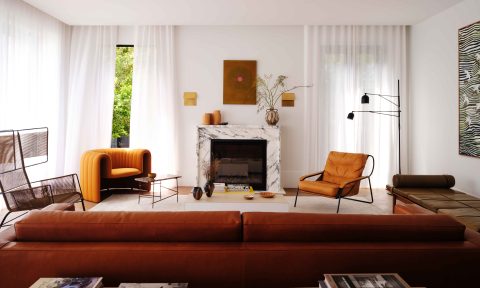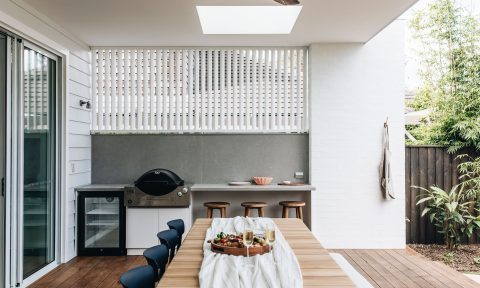Renovator Ozge Fettahlioglu shares her recent experience and views on biophilic design. She explains why connecting our homes with nature is more important than ever following a lockdown and in light of potential future ones.
Lockdown has changed the way we see and design our homes. I would like to share with you a new design trend that is long overdue: biophilic design.
My “I’m a city girl” motto has changed since lockdown. My soul and body respond better to soil, sea breeze and dancing bamboos. Let’s accept the fact that our metabolism is not happy living between four walls, with a pot plant in the corner and a palm print cushion. We need more than that in our homes to rejuvenate.
New trends to bring nature inside come and go all the time: vertical gardens, nature printed wallpapers, all these YouTube channels popping up about plants. I have tried many of these new trends in my own recent renovation but it still doesn’t feel enough.

I came across a design concept called biophilic design. It is not new, in fact some of the principals are similar to the ancient Feng Shui, but I think will be more widely used after the pandemic we currently live in.
Biophilia hypothesis is the idea that humans possess an innate tendency to seek connections with nature and other forms of life. We are wired to listen to the waves, watch the fire, and smell the air after the rain. When you walk into a new space, have you ever told yourself “wow, this feels nice”? From a design perspective, biophilic design explains why some places feel great and others don’t.
I know there are many design considerations architects think very carefully about, but many come down to biophilic design attributes. Stephen Kellert seems like the father of this design, so Google him if you’d like more information.
There are six attributes of biophilic design, which be classified under three categories. We can try to reconnect with nature as much as we can, by thinking and designing around these three categories.

For example, if your land has a beautiful tree, you will have direct experience to nature, and placing windows capturing the best view of the tree or even building the house around the tree, is something you can consider.
The indirect experience of nature refers to contact with the representation or image of nature. Marble tiles, wood furniture or a stone bathtub are some examples.
Experience of space and place implies spatial features characteristic of the natural environment that have advanced human health and wellbeing. Think about transactions between spaces, common use of spaces, spiritual and cultural connections we have with land or opportunities for discovery.

Simply put: the more we think around these details, the more connected we will be to nature and the more attractive our design will be. It is similar to strategic planning for your company.
I find staring at the place I will renovate, very, very useful. Feel the light, air, water, animals, weather, plants, and anything else that is around you. I know it is hard to think and plan them all, but it looks like we will be indoors for a while, and the wellbeing benefits are all proven, so let’s try as much as we can to incorporate them in our future renovation projects.
There are many research papers but if you have read so far, you already know how you feel when you are connected to nature. Your productivity and energy level will increase, stress levels will decrease, sleep cycles will improve. You will feel calmer, happier and a sense of belonging. There are even some research papers that link biophilic design to higher self-esteem, creativity, and positive thinking.
Follow the renovation of Ozge’s new Pearl Beach home.
-Ozge Fettahlioglu’s is an expert in human resources and management, currently lecturing at UNSW and UWS. She is also a reno/architecture “maniac” and recently started sharing her last three renovations so you learn with her and from her mistakes. She is a mum of two and lives in Sydney.











Comments
Frank Lloyd Wright was a pioneer in incorporating Nature and the native site into his structures. Often window mullion patterns were inspired by branching structure of nearby trees or shrubs. Woods were tend to be locally sourced and featured and stone work always local. Structures often wrapped natural site features.